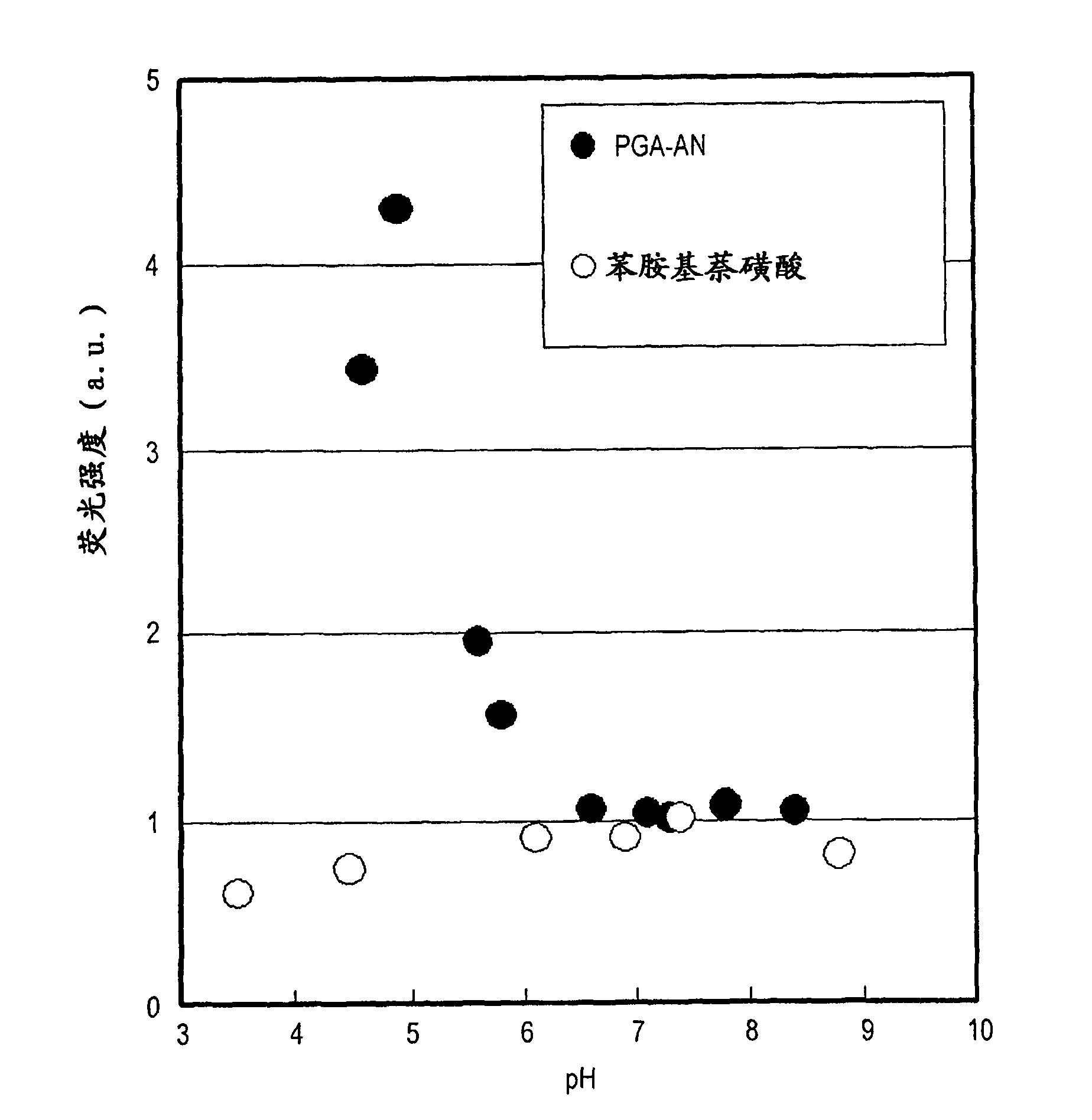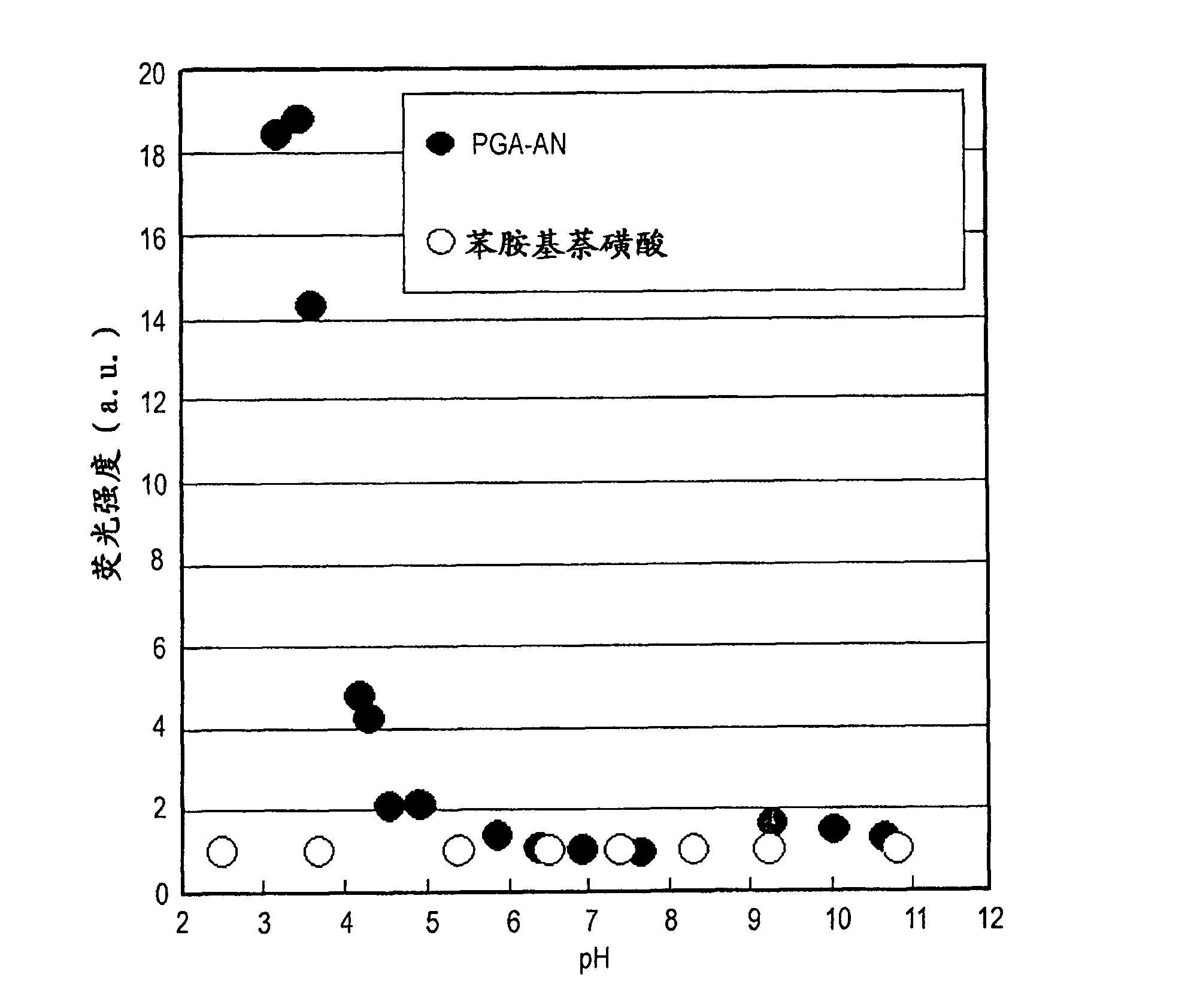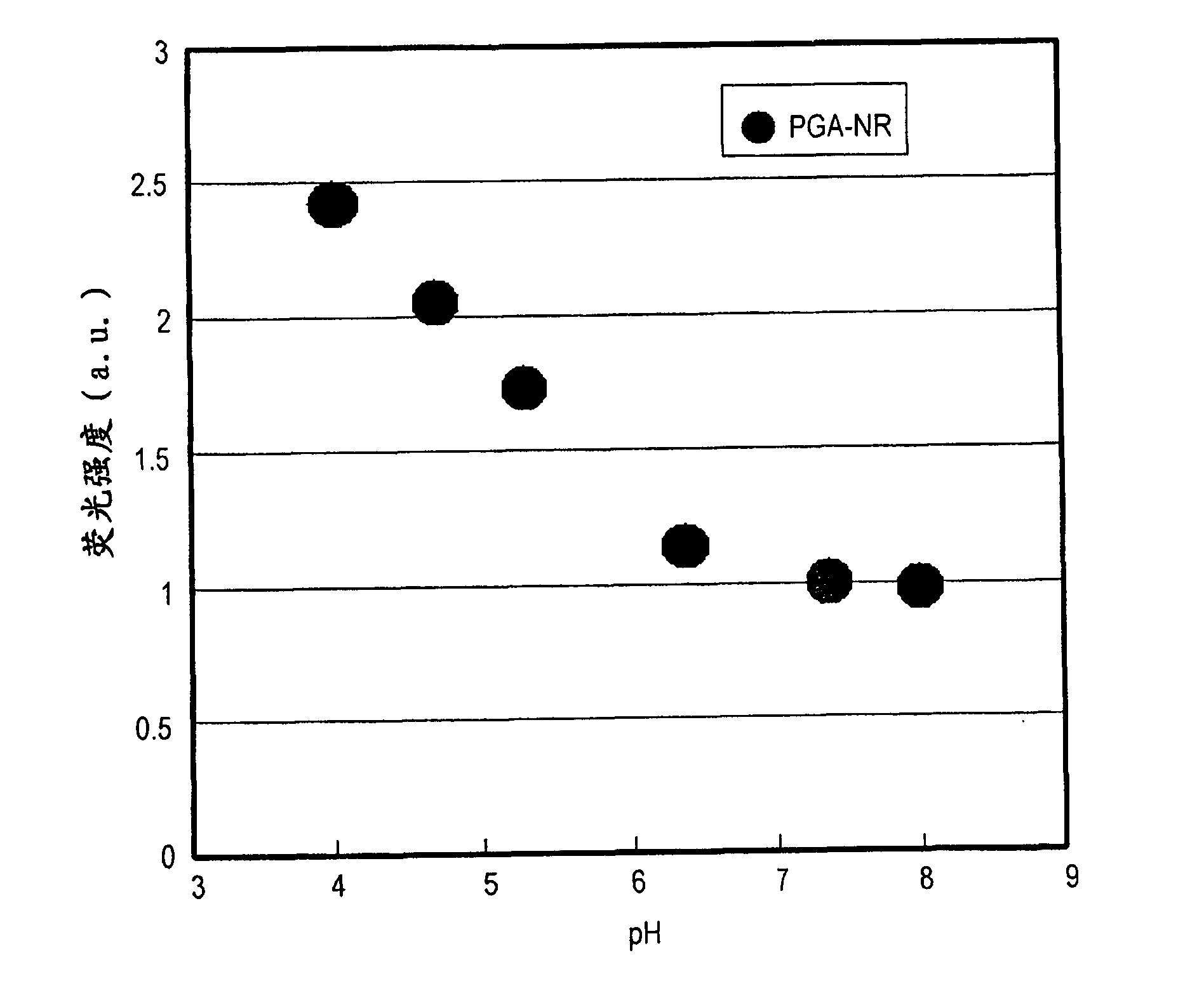Ph-sensitive probe comprising polymer and fluorescent dye
A technology of polymers and fluorescent dyes, applied in the field of fluorescent probes and new polymers, can solve problems such as difficulty in distinguishing high-grade malignant tumors
- Summary
- Abstract
- Description
- Claims
- Application Information
AI Technical Summary
Problems solved by technology
Method used
Image
Examples
Embodiment 1
Embodiment 1-1
[0061] A total of 1 g of sodium salt of poly-L-glutamic acid (PGA; molecular weight 41,000, Peptide Research Institute) was dissolved in 100 ml of distilled water, followed by stirring while adding hydrochloric acid dropwise, and the desalted PGA was precipitated. The resulting desalted PGA was washed thoroughly with acetone and then with diethyl ether, then dried in vacuo. The washed and dried PGA (150 mg) was then dissolved in 1 ml anhydrous DMSO, N-hydroxysuccinimide (NHS; 13.5 mg) and 1-ethyl-3-dimethylaminopropylcarbodiimide were added hydrochloride (EDC; 22.2 mg), and shake overnight at room temperature. Succinimidization was performed at a ratio of 10% to the total COOH. After this reaction, reprecipitation was performed with anhydrous acetone to remove unreacted EDC and the reaction product of NHS and EDC, 1-ethyl-3-(3-dimethylaminopropyl)urea. It was then centrifuged and washed two more times by decanting. The succinimidized PGA was then obtained by washing with he...
Embodiment 1-2
Modification of succinimidized PGA with anilinonaphthalimide
[0062] Succinimidized PGA (150 mg) prepared according to Example 1-1 above was dissolved in anhydrous DMSO (5 ml). Then, N-(1-anilinonaphthyl-4-)-maleimide (anilinonaphthylimide: ANM) (21 mg) and 6-amino-1-hexanethiol (11 mg ), add 1.5ml of DMSO solution which has been stirred overnight, and stir overnight at room temperature in the dark. The reaction solution was reprecipitated with acetone, and then washed twice by pouring. Then, 136 mg of anilinonaphthalimine-modified PGA (PGA-AN1) was obtained by washing with hexane, replacing with ether, and drying in vacuo (90% yield). By measuring the absorbance (350 nm) and anilinonaphthyl (AN) of the obtained PGA-AN1, it was confirmed that the modification rate of the AN group with respect to the total COOH of the PGA was 0.006. The structural formula of the obtained PGA-AN1 is shown in Formula 3 above. In this formula, m is 316, and N is 1.9.
[0063] Succinimidized P...
PUM
| Property | Measurement | Unit |
|---|---|---|
| diameter | aaaaa | aaaaa |
Abstract
Description
Claims
Application Information
 Login to View More
Login to View More - R&D
- Intellectual Property
- Life Sciences
- Materials
- Tech Scout
- Unparalleled Data Quality
- Higher Quality Content
- 60% Fewer Hallucinations
Browse by: Latest US Patents, China's latest patents, Technical Efficacy Thesaurus, Application Domain, Technology Topic, Popular Technical Reports.
© 2025 PatSnap. All rights reserved.Legal|Privacy policy|Modern Slavery Act Transparency Statement|Sitemap|About US| Contact US: help@patsnap.com



